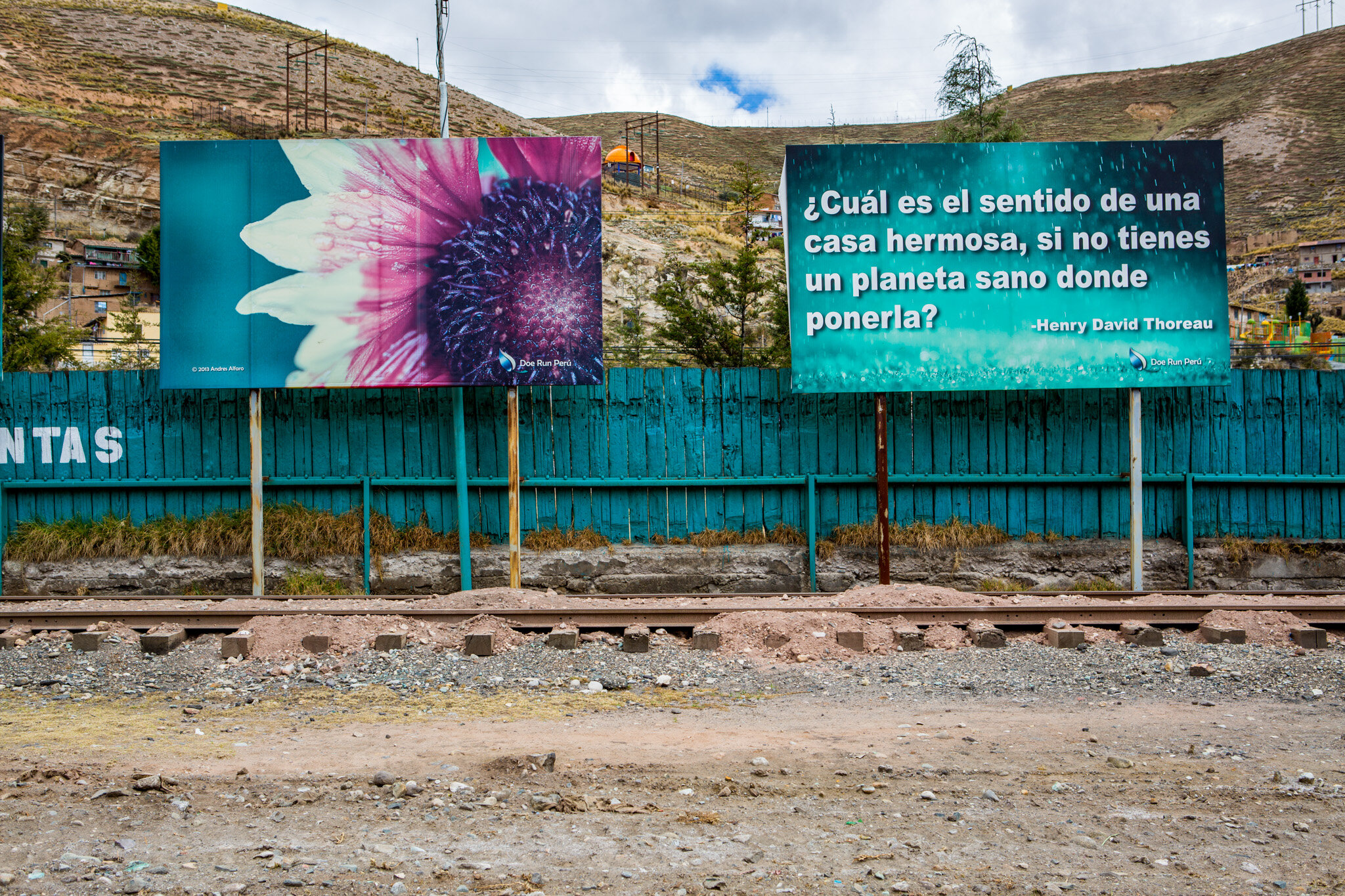
SERIES OF SHORT NEWS ARTICLES ON MINING IN THE PERUVIAN ANDES
A short self-assignment supported by the Pulitzer Center on Crisis Reporting and published there and on MongaBay exploring stories related to mining in the Peruvian Andes.
La Oroya is a city of about 33,000 people on the River Mantaro in central Peru. It is situated on the Altiplano some 176 km east-north-east of the national capital, Lima, and is the capital of the Yauli Province. La Oroya is the location of a smelting operation that earned the town a place on the Blacksmith Institute's 2007 report, "The World's Worst Polluted Places". 99% of children have blood levels that exceed acceptable limits, thanks to an American-owned (Doe Run) smelter that has been polluting the city (Lead, copper, zinc, and sulfur dioxide) since 1922. According to a 1999 survey, the average lead level was triple the WHO limit. Even after active emissions from the smelter are reduced, the expended lead will remain in La Oroya's soil for centuries — and there's currently no plan to clean it up.
Miners at the Colquijirca-Pasco mine (operated by Brocal, a partner of Buena Ventura), in Villa Pasco, Peru
Billboards quoting Thoreau celebrate nature in a green-washing campaign in La Oroya. La Oroya is a city of about 33,000 people on the River Mantaro in central Peru and the location of a smelting operation that earned the town a place on the Blacksmith Institute's 2007 report, "The World's Worst Polluted Places".
Cerro de Pasco (population 70,000) is a city in central Peru, located at the top of the Andean mountains. It is the capital of the Pasco region, and an important mining center (copper). At 4,330 metres (14,210 ft) elevation, it is one of the highest cities in the world.
Freddy Rojas Chacha is the President of the community of old town La Oroya and actively campaigns to clean up his city.
Graffiti in La Oroya blames greed for the polluted landscape. La Oroya is a city of about 33,000 people on the River Mantaro in central Peru and the location of a smelting operation that earned the town a place on the Blacksmith Institute's 2007 report, "The World's Worst Polluted Places".
A playground in La Oroya. La Oroya is a city of about 33,000 people on the River Mantaro in central Peru and the location of a smelting operation that earned the town a place on the Blacksmith Institute's 2007 report, "The World's Worst Polluted Places". 99% of children have blood levels that exceed acceptable limits, thanks to an American-owned (Doe Run) smelter that has been polluting the city (Lead, copper, zinc and sulfur dioxide) since 1922. The average lead level, according to a 1999 survey, was triple the WHO limit.
La Oroya is a city of about 33,000 people on the River Mantaro in central Peru. It is situated on the Altiplano some 176 km east-north-east of the national capital, Lima, and is the capital of the Yauli Province. La Oroya is the location of a smelting operation that earned the town a place on the Blacksmith Institute's 2007 report, "The World's Worst Polluted Places". 99% of children have blood levels that exceed acceptable limits, thanks to an American-owned (Doe Run) smelter that has been polluting the city (Lead, copper, zinc, and sulfur dioxide) since 1922. According to a 1999 survey, the average lead level was triple the WHO limit. Even after active emissions from the smelter are reduced, the expended lead will remain in La Oroya's soil for centuries — and there's currently no plan to clean it up.








